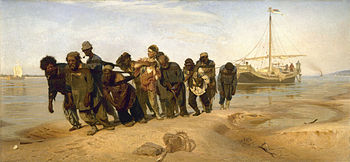What should be the team in the classroom? 30 people? What for?!
 or
or  ?
? The last two topics on the Education 2.0 blog have been devoted to Major Flaws . I would like to raise a question not of the main, but very significant drawback: a large number of students in the class.
We are so used to the fact that there should be 30-40 students in the classroom that we do not even question it (I studied in a class of 42 students). I would venture to refute this dogma.
Why are there so many children in the classroom now?
According to Robert Kiyosaki , the modern education system originated in Prussia in the era of industrialization. The country needed workers and soldiers, and the system did not educate creative thinking people, but subordinates, unquestioningly performing simple tasks.
A class is a small detachment, or workshop. This is the future company of soldiers, or a bunch of workers under the command of the brigadier. Workers must do primitive work, soldiers must do primitive work. 30-40 subordinates of one person is the maximum how much can be more or less kept in sight. More - just scatter.
How much should it be?
For primitive work, you can also gather a crowd of people. And for complex, intellectual large groups are simply meaningless. 2, 3, 4 people, maximum 6. What do you have to note - ordinary companies of people gather in exactly this quantity. Groups are gathered in such numbers. It `s naturally.
And now the question is: is training a primitive job, or is it still highly intellectual? Are we going to a modernized society, or in the era of industrialization?
Why are big teams bad?
I will give you an example. There is a large sheet of plywood weighing 60 kg. It can be comfortably carried by 6 people. Yes, each of 10 kilograms, but quite feasibly, quickly identifies the leader who leads, the rest calmly obey, or can conflict-free adjust its actions.
And now we offer to bring this sheet to 30 participants. At least 4 companies are immediately identified, each with its own leader. At least 2 leaders of their companies will agree in a dispute for common leadership, and they will be supported by their friends. But these are all trifles, in fact.
So, 30 people took a leaf, each carries only 2 kg, which is very easy. Anyone can pretend that he carries, and no one will notice. And he will suspect a neighbor that he does not carry, but pretends to be. Now we have 3 types of behavior:
- Honestly bear, but suspect that the neighbor does not bear.
- Not to carry, but to pretend that you are carrying, in a quiet chuckling.
- Do not bear it openly, indicating the absurdity of the situation.
And the paradox is that the first two points are really antisocial, because they cause distrust. And the third point is formally antisocial! All are antisocial, this is not a problem of conscience, but of a wrong organization.
What groups await today's students?
Primitive work is becoming less and less. Soldiers only march in a crowd, real military operations are conducted in small groups, they are easier to manage and more effective. The plants are CNC machines.
30 programmers under the guidance of one person will be able to write a good program? 30 pregnant women will give birth to a baby in a week? Who has not read Mythical Man-Month - read urgently!
So, as you know, we are moving towards the future, towards modernization and innovation. And we bring up children, as future barge haulers on the Volga .
We all know how to criticize, and you suggest something clever!
I understand that if you collect classes of 6 people, then any teachers are not enough. In addition, traditions must be respected. Therefore, somehow you still need to cope with classes of 25-30 people.
Without claiming to be a 100% solution, I will offer my options:
We break a class into groups
The beginning of the lesson is a short “meeting”, the teacher gives a general direction. Further, the principle of “1 teacher - 30 silent students” ends. The class is divided into groups of 3-4-5 people. Each group parses the subject according to the textbook or other material. Inside the group, someone understands faster, explains to others. The teacher walks between groups and helps, can clarify. But the main work is done inside. Further, within the groups, problems are solved. There is a competition between groups.
It is very important that groups learn to quickly organize themselves. Roles were quickly distributed: leader, brain, secretary, practitioner, etc. This is a separate issue, but it needs to be studied at school, and not on the street in companies.
It is important to constantly change the composition of groups. Pupils should be able to navigate in different situations, be flexible. And it is important to change roles: someone is often the “brain” - let him be the “secretary” in order to assess how difficult and responsible this work is.
In-depth study groups
It is known that we are moving towards the fact that compulsory subjects are becoming less and less. 3 items per day can be left according to the old system. And subjects with in-depth study can be carried out in small groups. Small rooms (for example, separated by a partition) gather groups of up to 6 people. They can study subjects independently on textbooks and computers, and once a week meet with the teacher to adjust the curriculum.
Authorship
Painting by Ilya Repin "Barge Haulers on the Volga". When reprinting material, I beg you to link to my personal page . Thanks.
